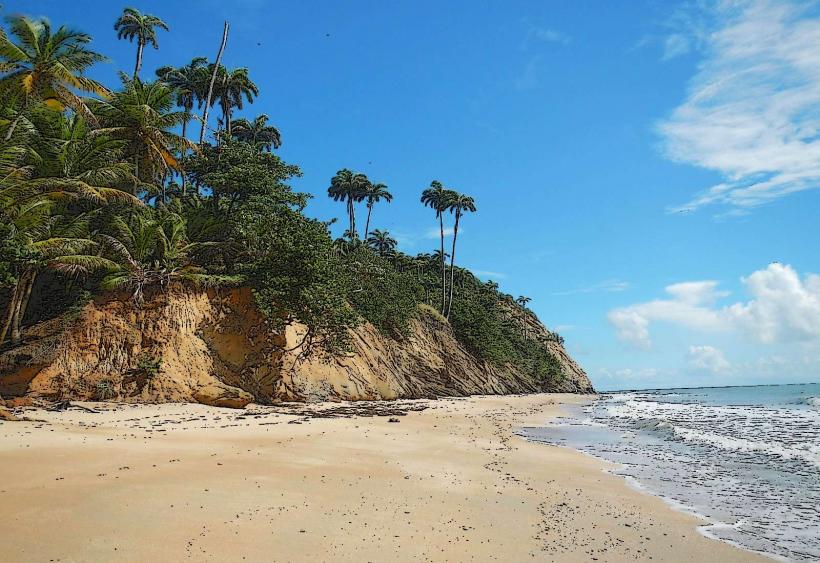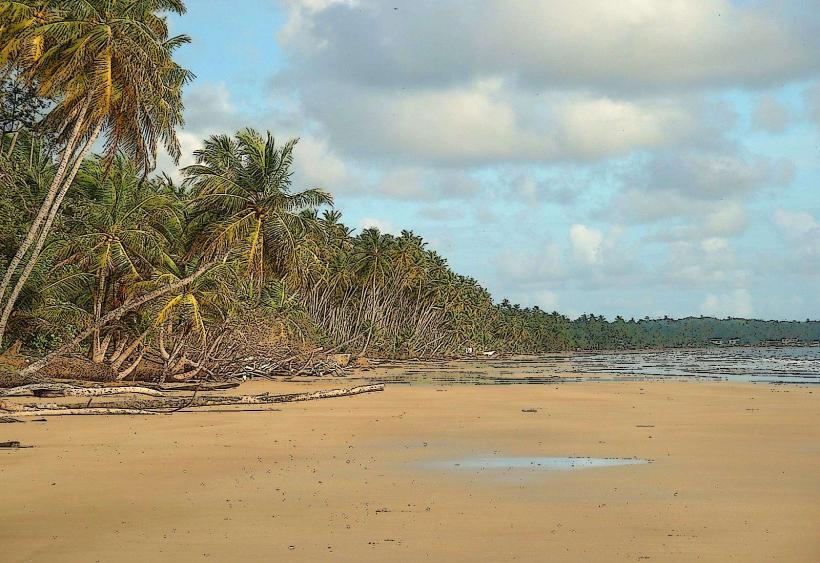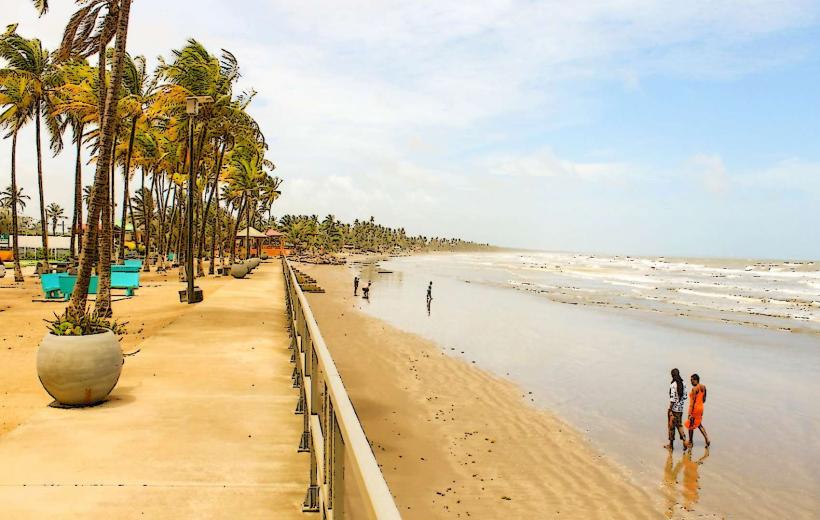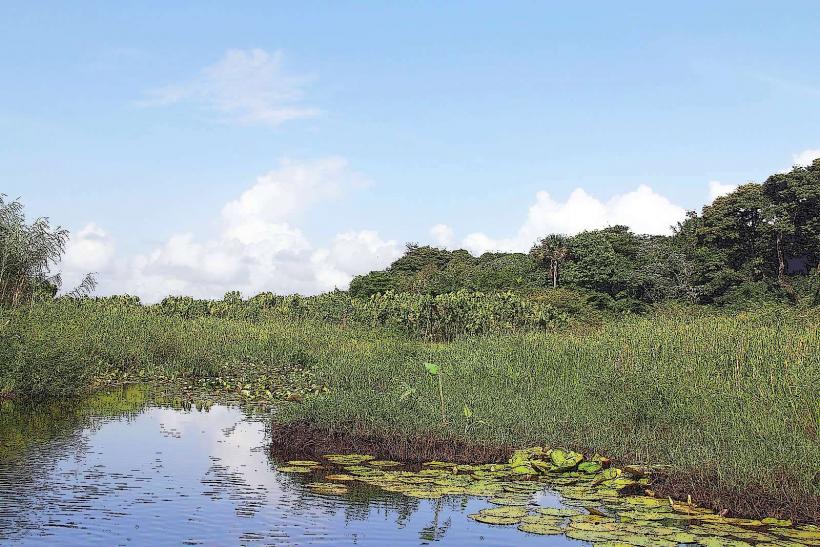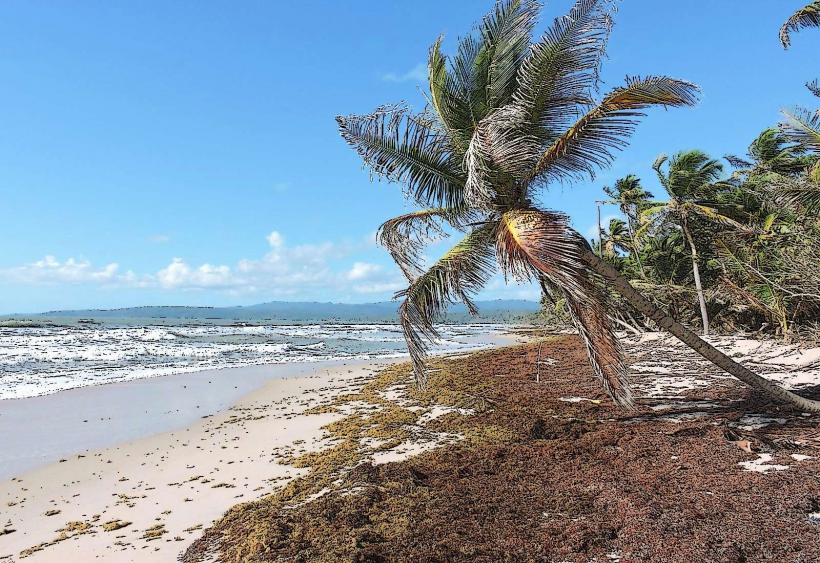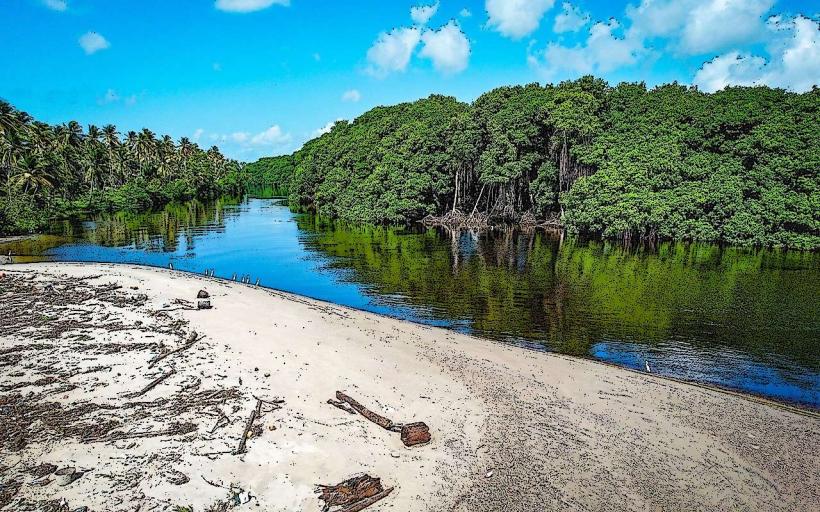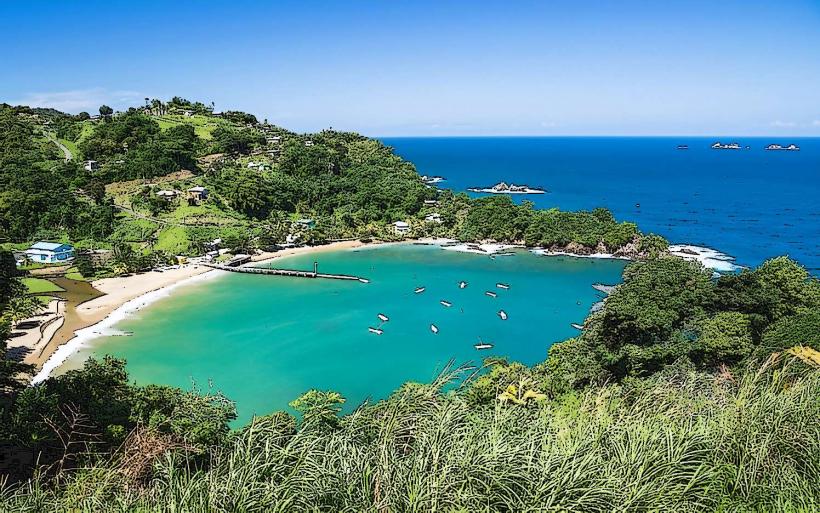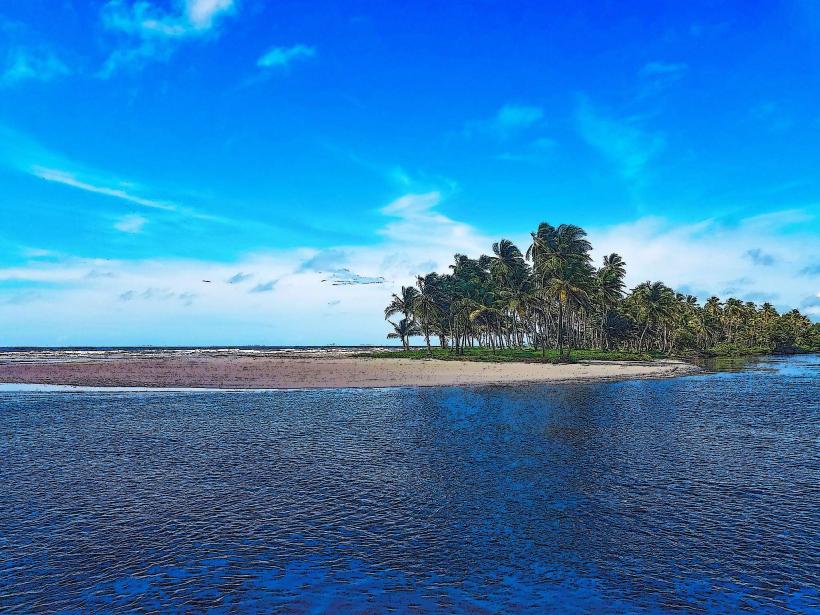Information
Landmark: Ortoire River MouthCity: Mayaro
Country: Trinidad and Tobago
Continent: North America
The Ortoire River Mouth is located on the southeast coast of Trinidad, where the Ortoire River meets the Caribbean Sea. This area is known for its natural beauty, biodiversity, and as a site of interest for ecotourism and birdwatching. The river mouth and surrounding areas are relatively secluded, offering visitors a peaceful and tranquil environment to explore. Here's a detailed overview of the Ortoire River Mouth:
1. Location and Accessibility:
- Geographic Location: The Ortoire River Mouth is situated near the town of Mayaro, along the southeast coast of Trinidad. The river flows through the Ortoire River Basin before emptying into the Caribbean Sea. It is located approximately 25 kilometers (15 miles) east of Mayaro and 70 kilometers (43 miles) southeast of Port of Spain.
- Access: The Ortoire River Mouth can be accessed by road from Port of Spain. Visitors typically travel via the Eastern Main Road to Mayaro and then follow local roads towards the river mouth. The area is relatively remote, so private transportation is recommended. It's best to use a GPS or a map, as signage in more rural areas may be limited.
2. Natural Features and Environment:
- Mouth of the River: The Ortoire River Mouth is where the river meets the sea, creating a unique mix of freshwater and saltwater. The estuarine environment supports a variety of plant and animal species, making it an important site for biodiversity.
- Coastal Landscape: The surrounding landscape is a mix of mangroves, beaches, and wetlands. The mangrove forests that line the river mouth act as an important natural barrier and provide habitats for various species of wildlife. The river mouth itself is a serene location, often characterized by calm waters and gentle waves.
- Wildlife Habitat: The area is home to a range of wildlife, including marine life such as fish and crustaceans, as well as mammals, reptiles, and birds. The estuarine environment supports species adapted to both freshwater and saltwater conditions, creating a diverse habitat for animals.
3. Ecotourism and Activities:
- Birdwatching: The Ortoire River Mouth is a popular spot for birdwatching, particularly for spotting migratory bird species. The mangrove ecosystems and wetlands attract a variety of shorebirds, herons, egrets, and waterfowl. The area is also a habitat for more elusive species like waders and waterfowl.
- Fishing: The river mouth is a prime location for fishing, both by locals and visitors. The brackish waters support a range of fish species, and traditional methods of fishing such as net fishing are often practiced in the area. Visitors may have the opportunity to join local fishermen on the river or engage in recreational fishing.
- Kayaking and Canoeing: The calm waters of the Ortoire River and its surrounding estuary make it an excellent location for kayaking and canoeing. Paddling through the mangrove-lined channels provides visitors with a close-up view of the ecosystem and its inhabitants, offering a peaceful and immersive way to explore the area.
- Nature Walks: The area around the Ortoire River Mouth is ideal for nature walks. Visitors can explore the surrounding wetlands, riverbanks, and coastal forests to witness the beauty of the region's flora and fauna. The walk can provide opportunities for wildlife observation, including spotting local bird species, reptiles, and amphibians.
- Swimming and Beach Activities: While the river mouth is primarily known for its estuarine environment, there are areas nearby that offer opportunities for swimming and relaxing along the beach. The waters are typically calm, though visitors should exercise caution near the river mouth due to potential currents.
4. Ecological Importance:
- Mangroves and Wetlands: The Ortoire River Mouth is part of a larger network of mangrove ecosystems and wetlands that are vital for coastal protection, water filtration, and supporting marine biodiversity. Mangrove forests help prevent coastal erosion and provide breeding grounds for various species of fish and other marine life.
- Habitat for Wildlife: The region’s mix of freshwater and saltwater environments creates diverse habitats for a variety of species. The estuarine ecosystem is particularly important for juvenile fish, which use the river mouth as a nursery before moving out to sea. The area also supports crabs, shrimp, and other invertebrates that thrive in the muddy and mangrove-covered shores.
5. Nearby Attractions:
- Mayaro Beach: Located to the west of the Ortoire River Mouth, Mayaro Beach is one of the most well-known beaches in the area, offering a long stretch of golden sand and calm waters. The beach is a popular destination for both locals and tourists and provides a variety of recreational activities, including swimming, picnicking, and walking along the shoreline.
- Manzanilla Beach: Situated to the north of the Ortoire River Mouth, Manzanilla Beach is another scenic beach along the southeastern coast of Trinidad. It is quieter than some of the more tourist-heavy beaches in the country and offers an opportunity to relax in a peaceful environment.
- Nariva Swamp: Not far from the Ortoire River Mouth, the Nariva Swamp is a vast protected area of freshwater wetlands. The swamp is one of the largest and most significant wetlands in Trinidad, supporting a wide variety of wildlife, including endangered species. It is a great location for birdwatching and exploring diverse ecosystems.
6. Conservation and Challenges:
- Threats to the Ecosystem: Like many coastal areas, the Ortoire River Mouth faces environmental pressures from human activities, including pollution, deforestation, and overfishing. Conservation efforts are crucial to preserving the mangrove ecosystems and ensuring the health of the river mouth for future generations.
- Environmental Awareness: Local environmental organizations and ecotourism groups often work to raise awareness about the importance of preserving the river mouth and surrounding ecosystems. Visitors to the area are encouraged to respect the natural environment by avoiding littering, disturbing wildlife, and practicing sustainable activities.
7. Best Time to Visit:
- Dry Season (December to May): The best time to visit the Ortoire River Mouth is during the dry season, which runs from December to May. The weather is typically sunny and warm, providing excellent conditions for outdoor activities like birdwatching, kayaking, and swimming.
- Rainy Season (June to November): The rainy season, from June to November, can bring heavier rainfall and potential storms, which might affect outdoor activities. However, this season can also be ideal for observing the lush vegetation and the rejuvenation of the mangrove ecosystem.
8. How to Get There:
- By Car: To reach the Ortoire River Mouth, take the Eastern Main Road from Port of Spain to Mayaro. From Mayaro, follow the local roads that lead to the river mouth. It is best to use a private vehicle or taxi, as public transport options are limited in this rural area.
- By Public Transport: Visitors can take a maxi-taxi or bus to Mayaro and then arrange for a local taxi to reach the river mouth. Given the remoteness of the location, arranging transportation ahead of time may be necessary.
9. Conclusion:
The Ortoire River Mouth is a tranquil and ecologically rich destination on the southeast coast of Trinidad. With its mix of mangrove forests, wetlands, and estuarine habitats, it is an ideal spot for nature lovers, birdwatchers, and those interested in exploring the unique ecosystems of Trinidad. Whether you are looking to observe wildlife, enjoy water-based activities, or simply relax in a secluded coastal area, the Ortoire River Mouth offers a peaceful retreat away from the busier tourist spots on the island.

